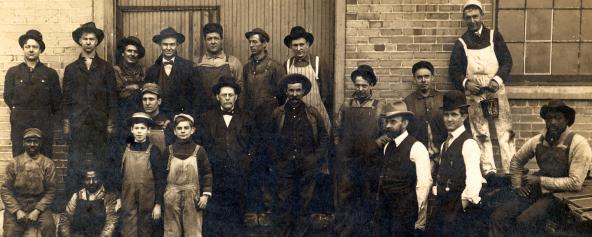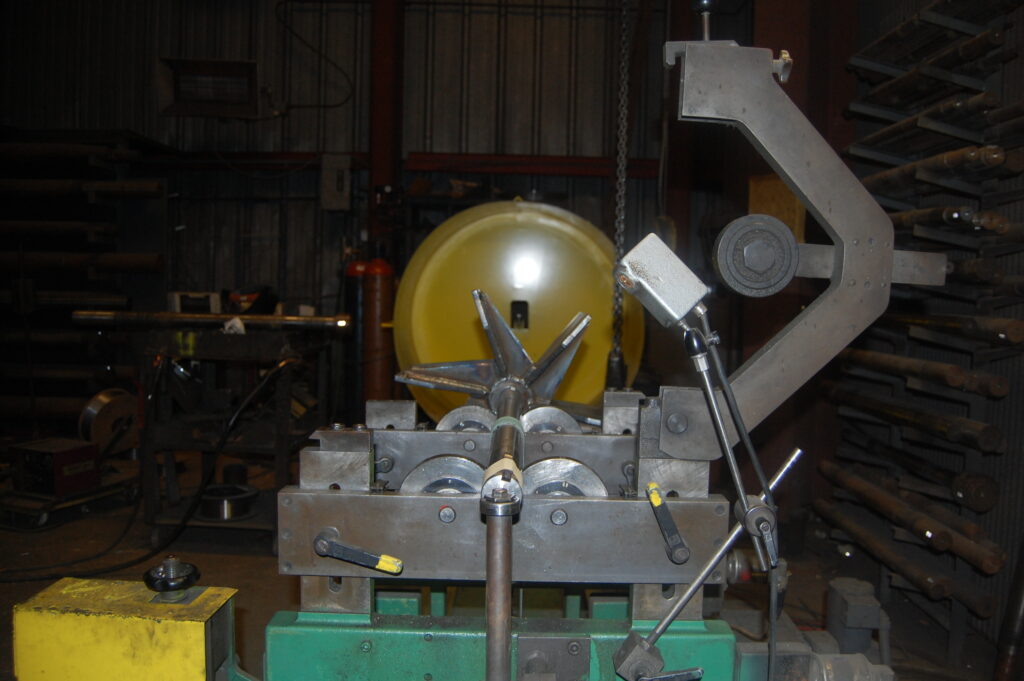COMPANY
OUR history

Frank Phelps left the family farm in Oklahoma, at the turn of the Century, to work in town while his sons ran the farm operation. With his innovative ideas on ways to improve the ginning of cotton, he was offered an opportunity with a company that manufactured cotton gins in Little Rock, Arkansas. He accepted the challenge.
By 1915, the gin manufacturer decided to close, but Frank was still thinking and tinkering. He directed his ideas and energies toward manufacturing fans for cotton gins. When he and his oldest son, Morton F. Phelps, bought the building at 715 Thomas Street, along with the machinery from the now-closed gin manufacturer, they decided to also purchase enough steel to make five fans. Phelps Fan Manufacturing Company was born. The early years were marked by steady growth through establishing a reputation for building durable, trouble-free fans for cotton gin and sawmill applications. Bold new design and manufacturing concepts produced two unique fan models, the Model HV-1® and the Model 25-K® which became industry standards. Offering replaceable parts and the warehousing of them for immediate shipment, provided these easy-to-fix fans an exceptionally long service life. Many of these rugged fans are still in service today.
It was part of Frank Phelps’ philosophy, “If you build a product too strong and too heavy, many will never know it. But, if you make it too weak and too light, everyone will know it.” That prompted the quality statement that continues to this day: We make them better than we have to.
The Company survived a 1927 fire that destroyed their building. They then rebuilt and continued to prosper through the 1930s. During World War II, the esteemed Model 25-K® fan went to war as a component in a portable saw mill package used by Army engineers in base construction projects.
The 1940s saw Phelps Fan, under the leadership of Frank’s grandson, William D. Phelps, expand manufacturing to include attic fans for residential and commercial ventilation. One development introduced, which was very imaginative for the time, was a system to provide a four-speed attic fan. These popular fans were produced until 1960, and many homes in Arkansas still have them today.
By 1968, the company was under the direction of Morton E. Phelps and Fred P. Lanford. Phelps Fan’s growth necessitated more space, so a new building was constructed at 10701 I-30. Three subsequent expansions have allowed the Company to continue its growth. Today, these buildings house the office and engineering sectors as well as the fabrication and storage facilities.
The past two decades have been years of dramatic change for Phelps Fan. William D. Phelps, Jr., the fourth generation Company head, directed the development of a wide variety of industrial fans, greatly expanding the product market and territorial opportunities. Here, too, the hallmarks of innovation in design and fabrication, quality manufacturing, responsive service and dependable, durable products which has served the Company so well from inception, proved again to be the foundation for its continuing success.
The late 1980s were spent completely refurbishing the Phelps Fan lines to meet today’s demands for energy efficiency. Now, with cutting-edge technology, Phelps Fan accommodates the most stringent specifications with custom solutions for unusual and special applications. Often utilizing exotic metals and alloys, special finishes and coating and developing specialized processes, Phelps’ fans have proven to be exceptionally well-suited for abrasive, hostile environment.
For over 85 years, the Company, now headed by CEO Don Phelps, the fifth generation, and President Joe Hadden, continues to serve the industry with efficient and effective solutions for air movement applications. From routine industrial needs to the demands of nuclear age requirements, Phelps Fan’s commitment to innovation and technology meet the needs of today while positioning itself to meet those of the next century.



